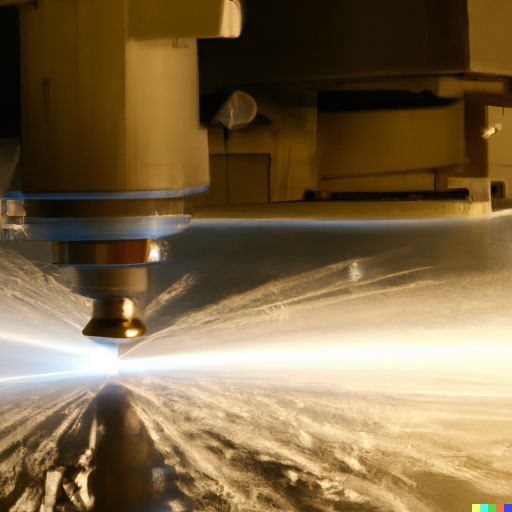The Art Of Sheet Metal Fabrication
It is no easy task to master the art of sheet metal fabrication. It requires a thorough understanding of the complexities involved in transforming raw metal materials into finished products or components. The process entails a series of cutting, shaping, and assembly/finishing techniques, all of which require precision and expertise. This article covers sheet metal fabrication: basics, cutting, assembly, finishing, in-house tooling, choosing a shop, custom fabrication, deep draw stamping, laser cutting, and design mistakes.
Metal Fabrication Basics
Metal fabrication encompasses a range of processes, including cutting, shaping, and assembly/finishing. This is crucial for transforming raw metal materials into final products or parts. Sheet metal bending techniques are an important aspect of fabrication, allowing for the creation of complex shapes and structures. Common techniques include air bending, where the metal is bent using a V-shaped die and a punch, and bottoming, where the metal is forced against a flat surface to achieve the desired bend. Welding is another essential method in fabrication, used to join metal pieces together.
Cutting Techniques
One of the most important processes in sheet metal fabrication is cutting. It is essential for creating accurate and precise cuts that ensure the desired shape and size of the final product. Laser cutting has become increasingly popular for sheet metal cutting due to its many advantages. It offers high precision, the ability to cut complex shapes, minimal material waste, and the ability to cut a wide range of materials. Laser cutting allows for faster production times and reduces the need for secondary operations. In addition to laser cutting, sheet metal piercing is also commonly used. This involves creating holes or perforations in the sheet metal, which can be achieved through methods such as piercing, blanking, or perforation.
Assembly and Finishing
Assembly and finishing processes are crucial in the production of sheet metal parts as they involve the joining and refinement of individual components to create a final product. In the metal fabrication industry, there are several common welding techniques used for assembly, including oxyacetylene welding and tungsten inert gas (TIG) welding. Oxyacetylene welding is a versatile method that can be used on various metals, while TIG welding offers high precision and control.
Metal finishing is another important aspect of sheet metal fabrication. It involves applying a surface treatment to improve the appearance, durability, and functionality of the metal. Some common benefits of metal finishing include corrosion resistance, increased hardness, improved aesthetics, and enhanced electrical conductivity. Galvanizing, glazing, and buffing are examples of metal finishing techniques used to achieve these benefits.
Overall, the assembly and finishing processes play an important role in creating high-quality sheet metal parts that meet the desired specifications and requirements.
Frequently Asked Questions
What are some common mistakes to avoid when designing sheet metal parts?
Common design mistakes in sheet metal fabrication include inadequate bend relief, improper hole sizing, insufficient material thickness, and lack of proper tolerances. To ensure successful fabrication, it is important to follow design guidelines and consult with experienced professionals.
What are the limitations and advantages of laser beam machining in sheet metal fabrication?
Laser beam machining in sheet metal fabrication offers advantages such as high precision, narrow kerf width, and minimal heat-affected zone. However, it has limitations, including high initial cost, limited material thickness, and potential for thermal distortion.
What are the design guidelines to follow for deep draw stamping?
Design considerations for deep draw stamping include selecting appropriate materials, considering part geometry, maintaining uniform wall thickness, avoiding sharp corners, using proper lubrication, and ensuring adequate draw clearance.
What specific tools are required for custom sheet metal fabrication?
Custom sheet metal fabrication requires specific tools such as shears, press brakes, rollers, and CNC machines for cutting, bending, and shaping the metal. Other tools include welders, grinders, and finishing equipment for sheet metal welding techniques and advanced sheet metal forming techniques.
How does the cost of laser cutting vary based on different factors?
Laser cutting costs in sheet metal fabrication vary based on several factors, including material type, thickness, complexity of the design, and the size and number of cuts. The pros of laser cutting include high precision and speed, while cons include high initial investment and limitations on certain materials.
Sheet Metal Fabrication Services
Mastering the art of sheet metal fabrication requires a deep understanding of the various cutting techniques, assembly processes, and finishing methods involved. Fabrication basics such as laser cutting, water jet cutting, stamping, bending, and welding are essential skills. In-house tooling capabilities, like those offered by Fox Valley Stamping, play a crucial role in achieving precision parts. It is important to avoid common mistakes in sheet metal designs and to consider the limitations and pros and cons of laser cutting.
Fox Valley Stamping is a leading provider of metal stamping, laser cutting, metal fabrication, secondary and value-added operations. We offer a wide range of services to businesses in virtually every industry. Our expertise and capabilities mean that we can bring your designs to life with precision and quality. We have a team of experienced and skilled engineers and technicians who are dedicated to providing our customers with the best possible service. We use the latest technology and equipment to ensure that our products meet the highest standards of quality. We are committed to providing our customers with the best possible value for their money. Contact us today to learn more about our services and how we can help you with your next metal fabrication project.




 847.741.2277
847.741.2277
